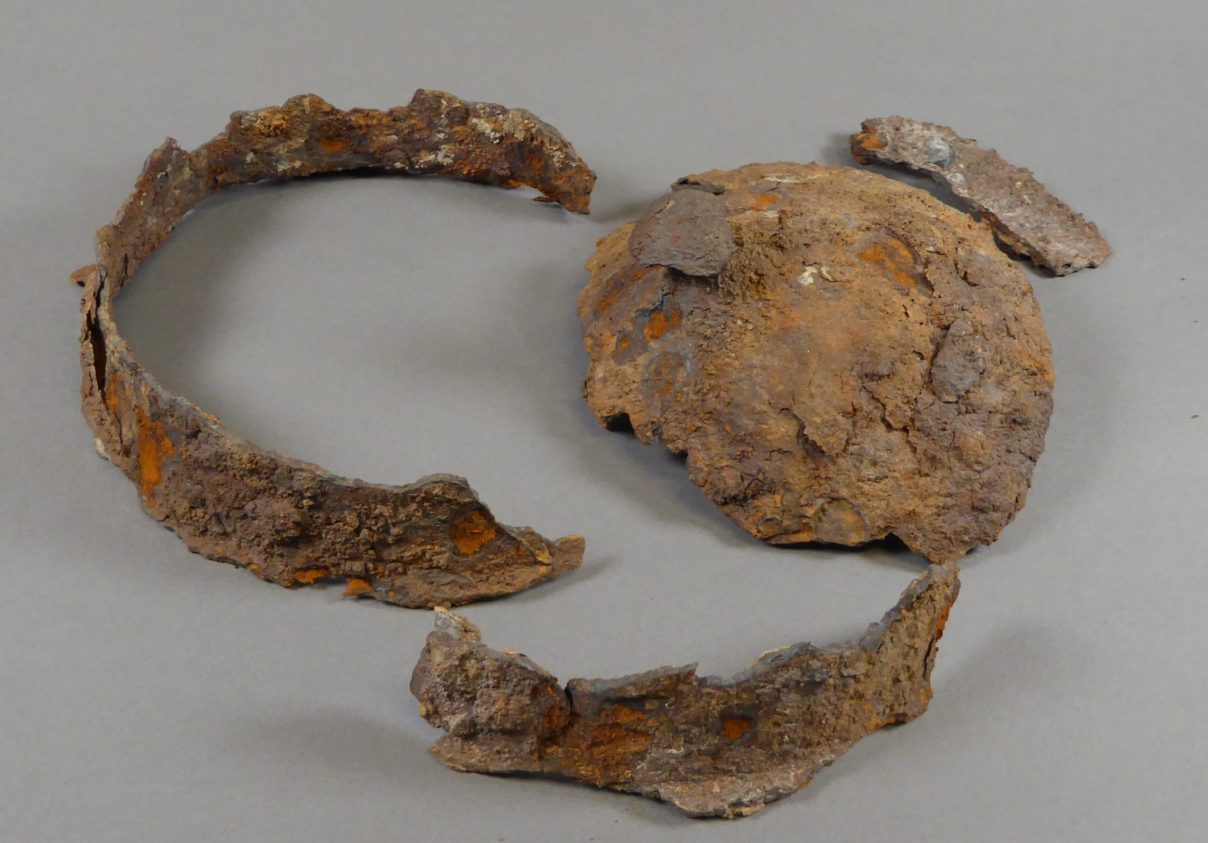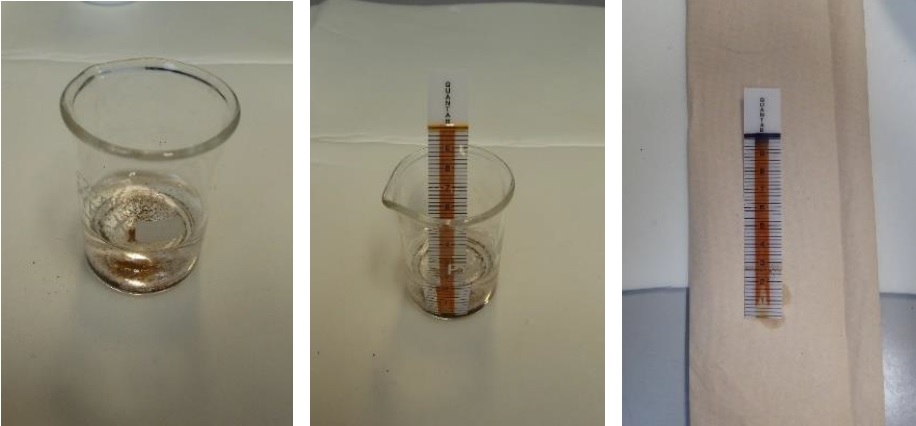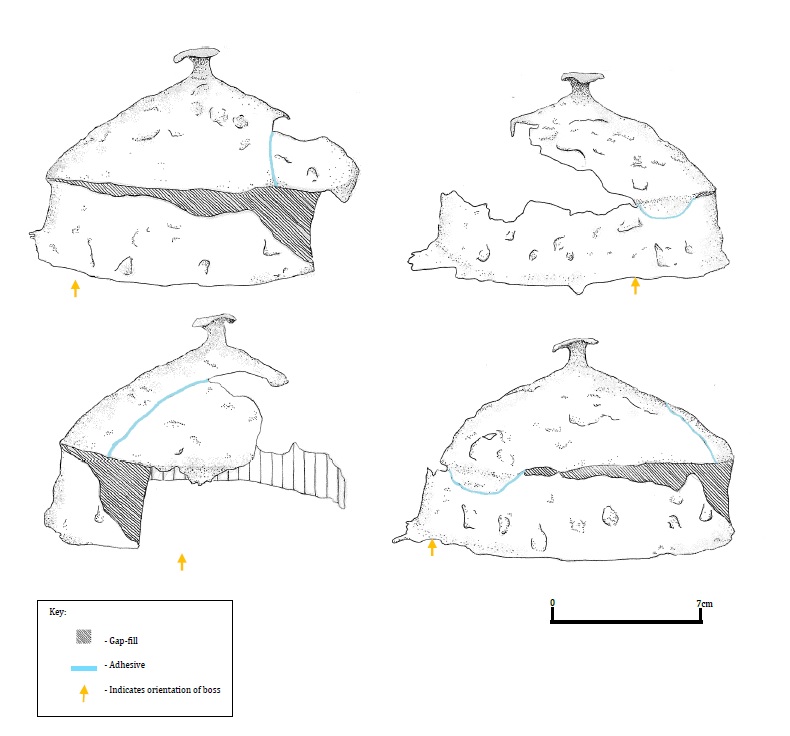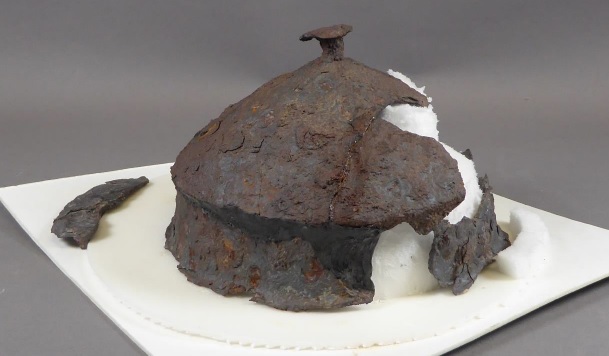January ’20

Iron Shield Boss
January’s ‘Object of the Month’ is an iron shield boss from an Anglo Saxon shield. Between 1998-2000, excavations undertaken in advance of gravel quarrying within the fields of Hollow Bank Farm (Scorton, North Yorkshire) led to the discovery of a wealth of prehistoric material, among which this shield boss was found, interred within an Anglian burial dated to around the 6th/7th century AD.

The material found confirmed the site as a place of significance from the Mesolithic period through to the Post-Medieval period as evidence suggests continual use as a place for burial. The context the shield boss was found in, the Anglian cemetery, is understood to be of national significance given its proximity to the contemporary settlement Catterick, a site which is widely understood to be the location of the epic battle (638 AD) between the Angles and the Britons, immortalised in the Early Medieval poem Y Gododdin.

This boss would have been part of an early Anglo-Saxon shield, which was composed of an iron boss with a grip, attached by a series of rivets to a wooden board, often a plank construction. The primary function of the boss was to protect the user’s hand during battle.
The boss arrived with extensive active corrosion indicated by the presence of orange, powdery akaganeite. Weeping corrosion was also apparent on the boss; the presence of akaganeite and weeping corrosion would suggest the presence of chloride ions within the iron and corrosion products.
Conservation

The presence of akaganeite corrosion indicates that chloride ions are actively catalysing the corrosion of the remaining metallic iron. To confirm this, a small sample of powdery corrosion was placed in deionised water and then tested using Hach QuanTab test strips. The strip indicated that 0.007% NaCl and 42ppm (mg/l Cl-) were present in the sample. It is probable that the concentration is much higher within the object.
Desalination is the chief option to conservators to lower the rate of corrosion for objects exhibiting chloride-catalysed corrosion. As desalination removes chloride ions.

To improve the results of desalination, lower the risk of further corrosion and to improve the appearance of the boss, voluminous corrosion products were removed using air abrasive techniques. Pressurised air was used to fire a thin stream of aluminium oxide (53 micron) at the corrosion products. This technique is particularly useful as the powder flow and air pressure can be adjusted and the thin stream of abrasive can target areas easily, overall allowing for a high degree of control
In preparation for desalination using NaOH it was necessary to take down the cellulose nitrate joins, as they will react to NaOH, and reassemble the shield boss with a material which will not be affected. In this instance HMG Paraloid B72 was chosen.
The old joins were removed by placing acetone soaked cotton wool against the cellulose nitrate adhesive. Once the joins were removed, excess adhesive was removed using cotton wool swabs with acetone.

In order to be structurally sound, a small portion of the boss required gap-filling following adhesion of the joins. If left unfilled the joining edge would be bearing the entire weight of the cone and therefore encourage join failure. A Paraloid B-72 putty, composed of B-72, glass microballoons and powder pigment was chosen as it would be long term stable and strong enough to maintain the stability of the object.
The shield boss was placed onto a custom made mount and dental wax was used as a backing so the fill material could be built up easily. Following gap-filling, the boss was well supported and capable of standing when off the mount and the appearance of the fill did not detract attention away from the original material

Following corrosion removal and gap filling the shield boss was then able to undergo desalination treatment, which will help to make the object long term stable.
Stay tuned for next month’s object!
